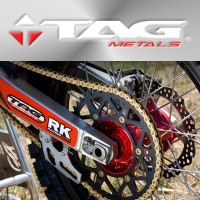Free AMA MX Tickets!
 Tuesday, November 11, 2014 at 12:50PM
Tuesday, November 11, 2014 at 12:50PM Veterans Eligible for Free AMA MX Tickets

The entire motocross community would like to thank the individuals who have served, as well as those who are currently serving, to protect our freedom in America.
For 2015, Lucas Oil Pro Motocross has donated 50 General Admission tickets for each of the 12 rounds of the Nationals to the Vet Tix foundation. Tickets will be available to all military veterans two weeks prior to each event through VetTix.org.
"The donation of free tickets has dramatically widened the range of ways that veterans can relax, enjoy themselves, share smiles with their families and loved ones, and for some, be re-integrated into civilian life," said CEO and Founder of Vet Tix Michael Focareto.
Major sports franchises from Major League Baseball, the National Basketball Association, National Football League, and National Hockey League have also partnered with Vet Tix, as have World Wrestling Entertainment and Professional Bull Riders. Lucas Oil Pro Motocross was one of the first prominent motorsports properties in the country to offer this one-of-a-kind service to all veterans of the armed services and is proud to enter its fourth year of partnership with the nonprofit organization.
Vet Tix, based in Phoenix, is a national nonprofit organization that provides free tickets to veterans and active-duty members of the military and their families. The concept of Vet Tix was developed in 2008 by U.S. Navy veteran Michael Focareto. Since then, the organization has given away more almost 1.2 million tickets to veterans nationwide.
All active and retired military veterans can create an account on VetTix.org to receive emails and reminders about when Lucas Oil Pro Motocross tickets become available. More information about Vet Tix can be found at VetTix.org.
The 2015 Lucas Oil Pro Motocross Championship kicks off Saturday, May 16, with the Hangtown Motocross Classic in Sacramento, California. The world's best riders will compete over the course of 12 rounds of action on the most renowned motocross tracks in the country. Tickets will go on sale series-wide beginning on Monday, November 24. Stay tuned for special promotions and discounts throughout the holiday season.
For additional information, please visit our new URL ProMotocross.com and LIKE the Pro Motocross Facebook page and follow @ProMotocross on Twitter and Instagram for exclusive content and additional information on the latest Lucas Oil Pro Motocross Championship news.














